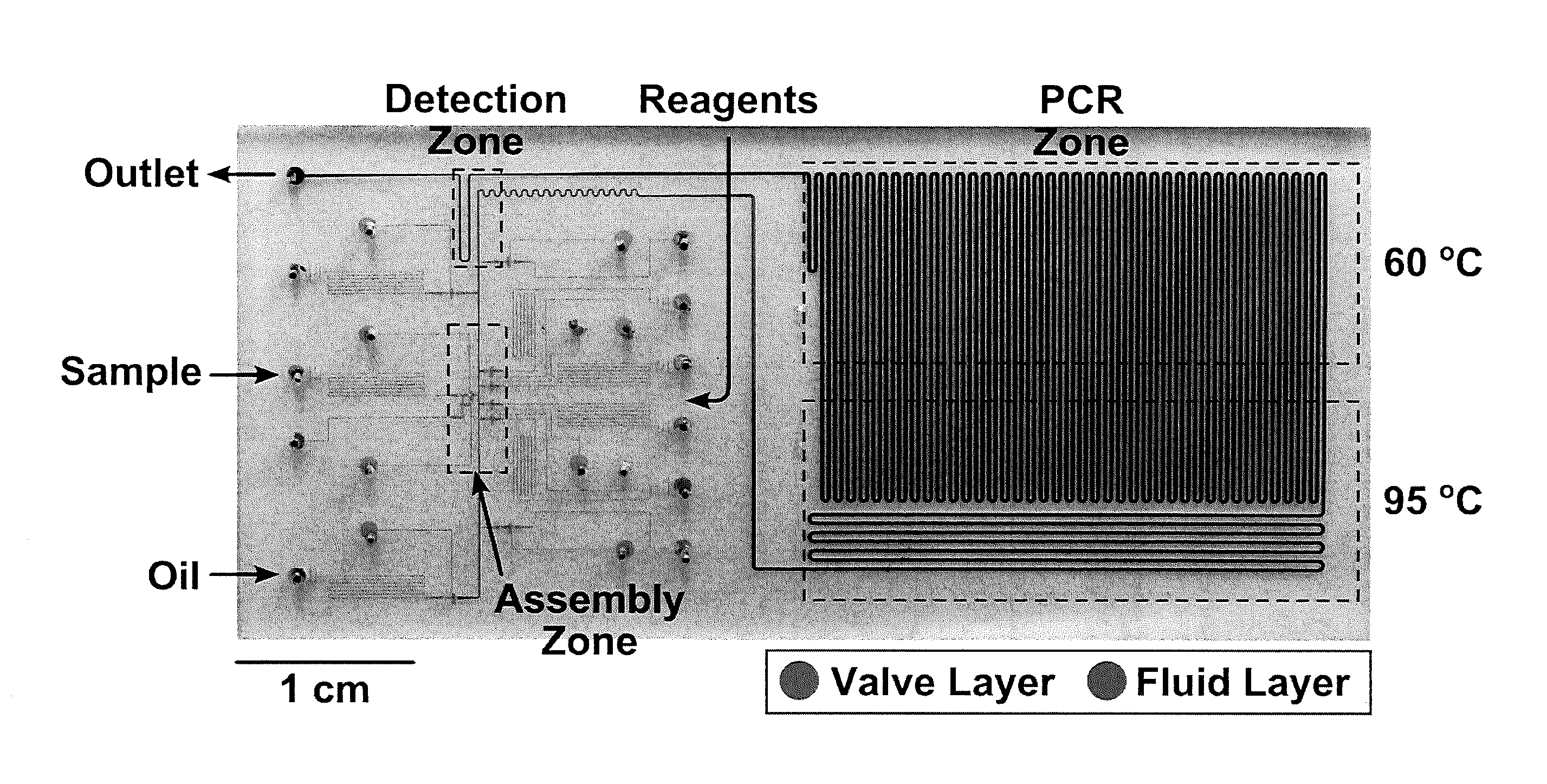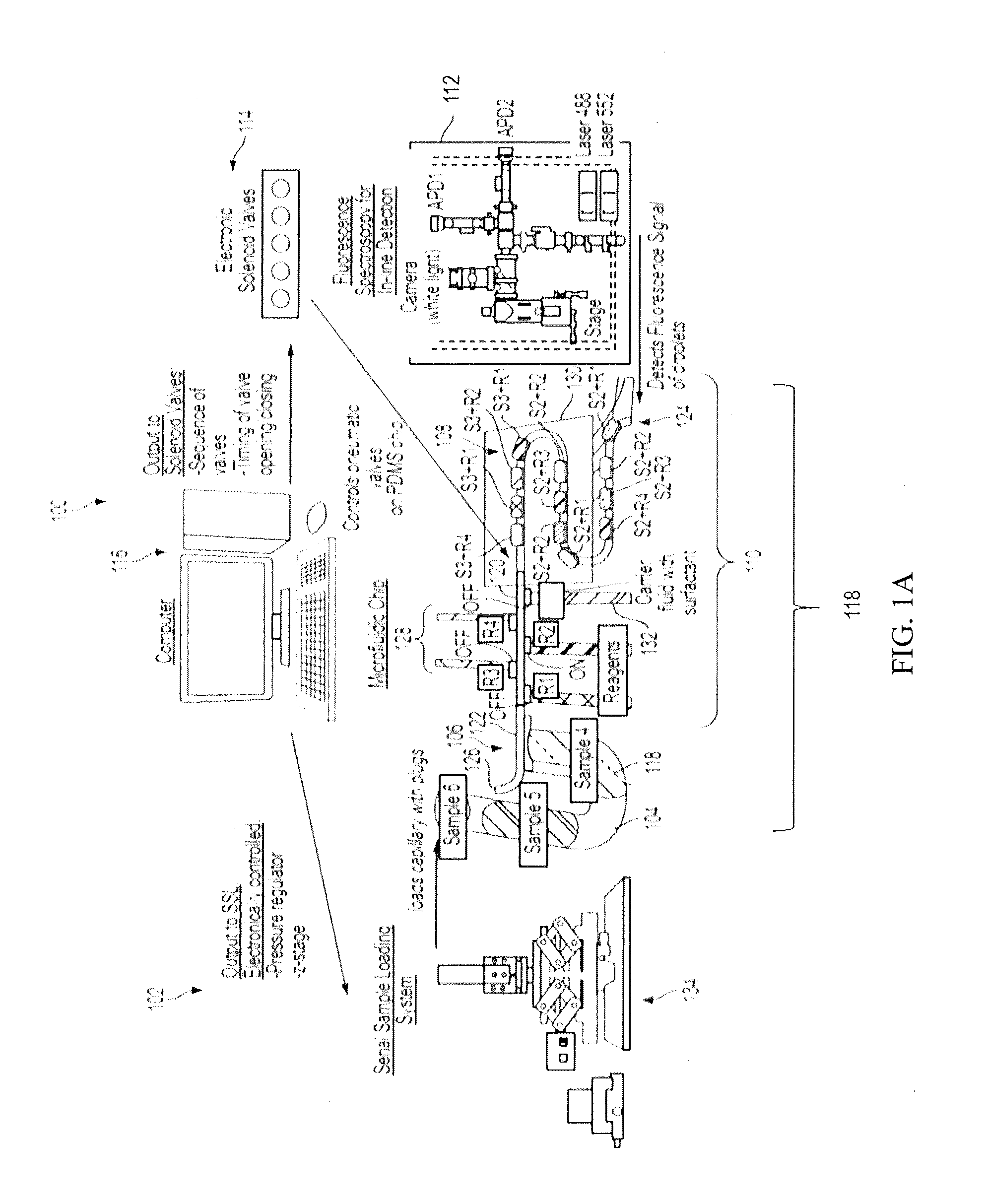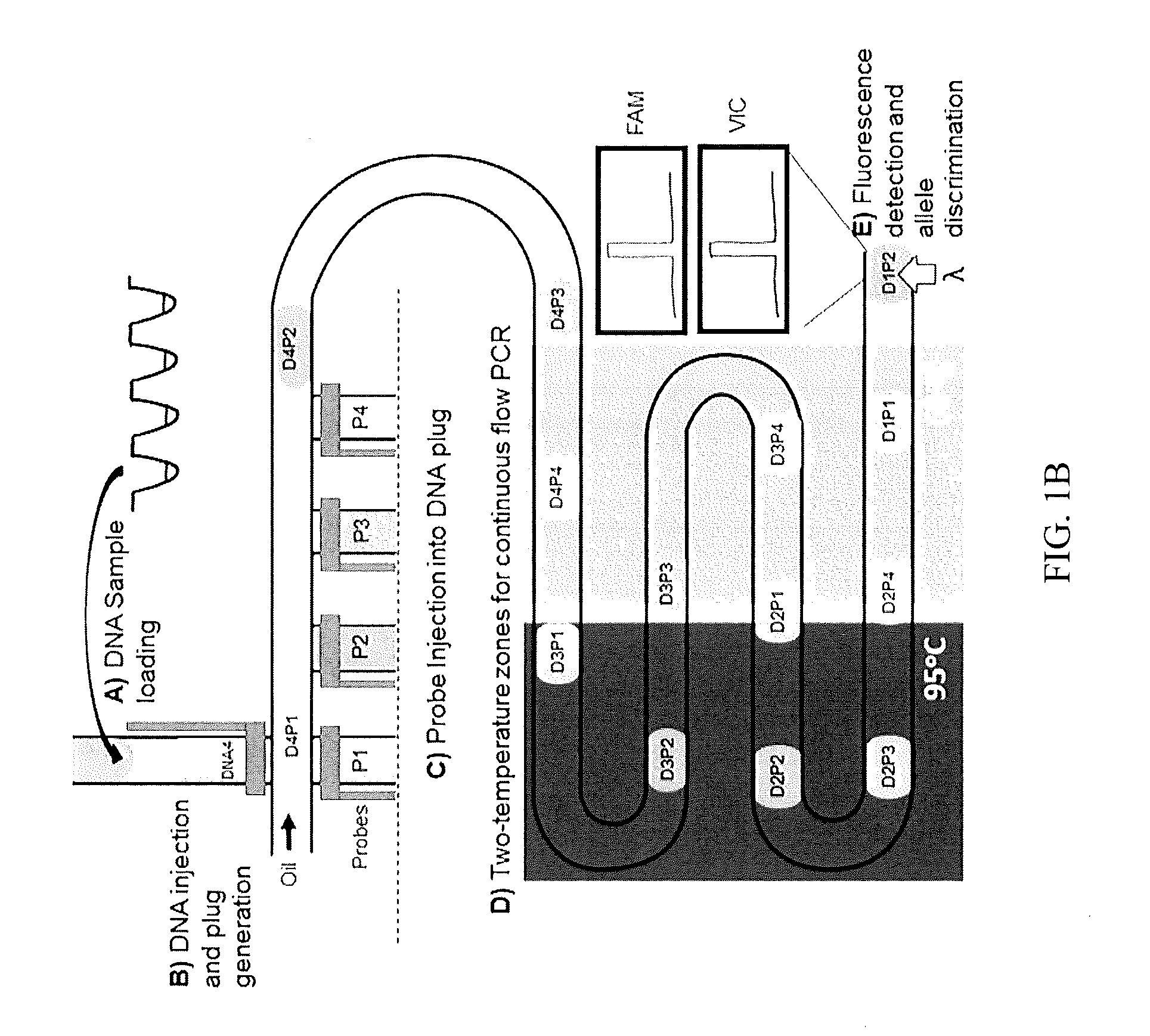Multiplexed, continuous-flow, droplet-based platform for high-throughput genetic detection
a technology of genetic detection and droplet, applied in the field of microfluidic systems, can solve the problems of difficult introduction of a large number of samples on a miniature microfluidic device, limited operation, and robotic systems becoming incredibly fast at sample processing operations
- Summary
- Abstract
- Description
- Claims
- Application Information
AI Technical Summary
Benefits of technology
Problems solved by technology
Method used
Image
Examples
examples
[0085]Maintaining global crop production has become increasingly important amidst a growing global population, and together with water scarcity, pollution, decreasing arable land, emergence of new pests, and possible climate change pose significant challenges. Toward this end, genetic marker assisted selection (MAS), wherein the plant breeding process relies on known DNA / RNA variations associated with traits of interest (e.g., productivity and disease resistance), has enormous potential to improve the efficiency and precision of conventional plant breeding. Performing MAS at the scale required for agricultural applications, however, requires screening a large number of plant samples against a large number of markers, thus presenting a critical need for novel tools that can meet this demand.
[0086]Here we present a microfluidic droplet platform aimed towards performing multiplexed, continuous-flow, Taqman PCR-based genotyping for high-throughput MAS (FIG. 1B). The platform is designed...
PUM
 Login to View More
Login to View More Abstract
Description
Claims
Application Information
 Login to View More
Login to View More - R&D
- Intellectual Property
- Life Sciences
- Materials
- Tech Scout
- Unparalleled Data Quality
- Higher Quality Content
- 60% Fewer Hallucinations
Browse by: Latest US Patents, China's latest patents, Technical Efficacy Thesaurus, Application Domain, Technology Topic, Popular Technical Reports.
© 2025 PatSnap. All rights reserved.Legal|Privacy policy|Modern Slavery Act Transparency Statement|Sitemap|About US| Contact US: help@patsnap.com



